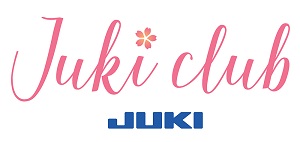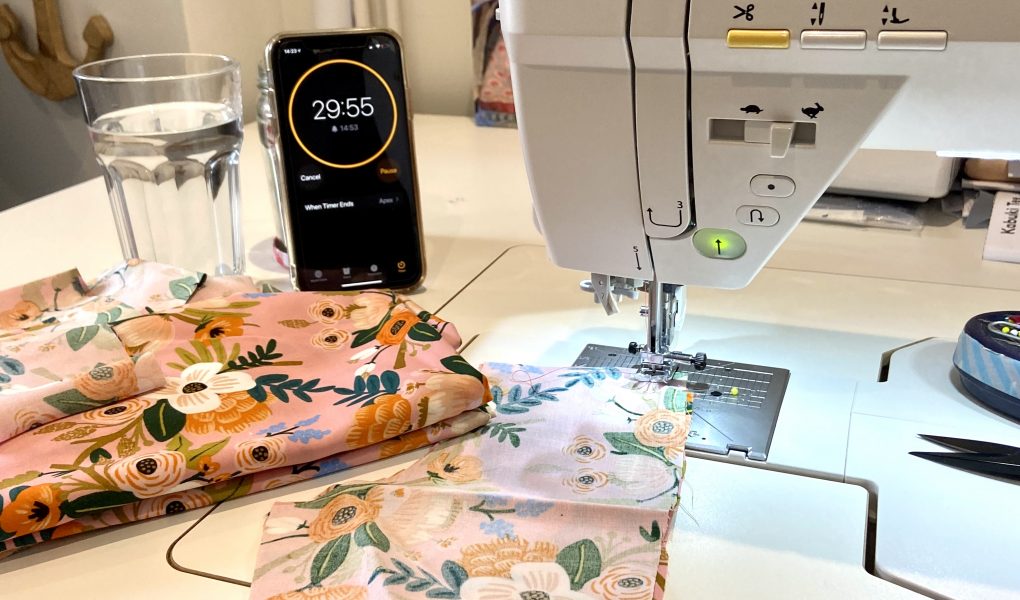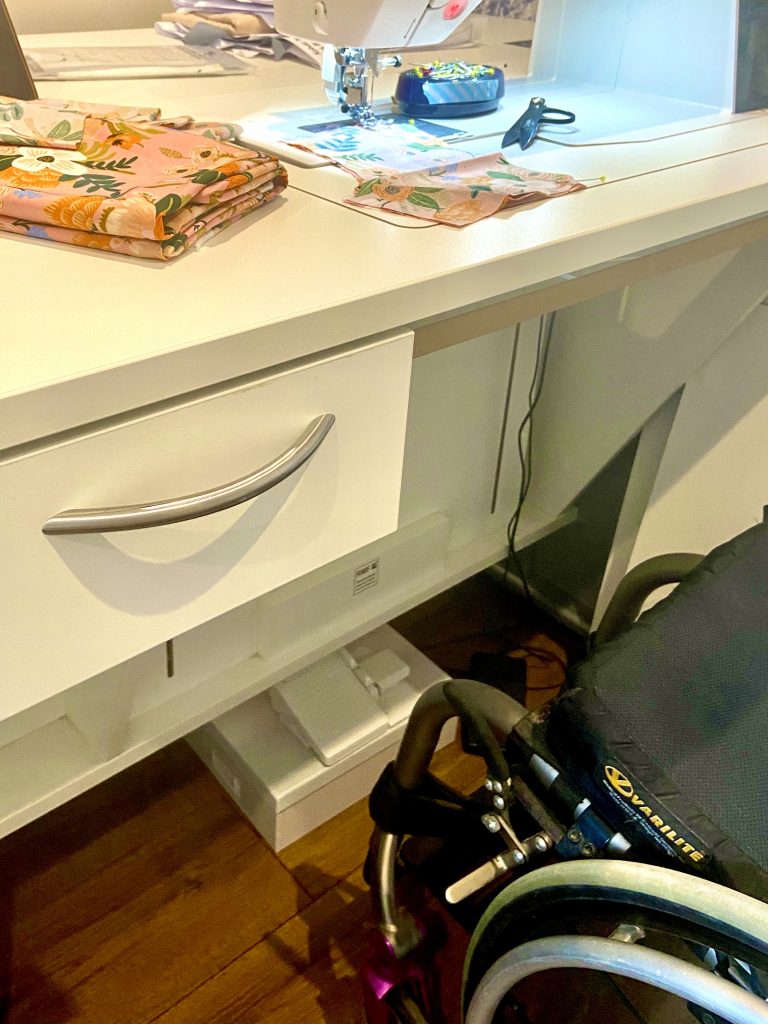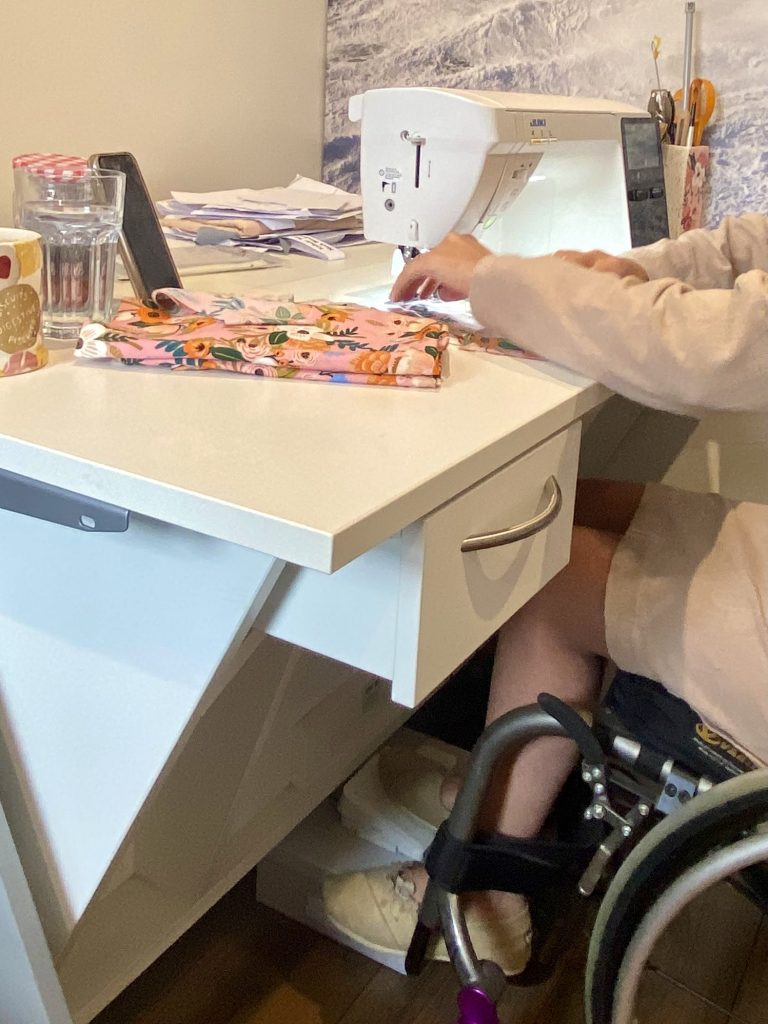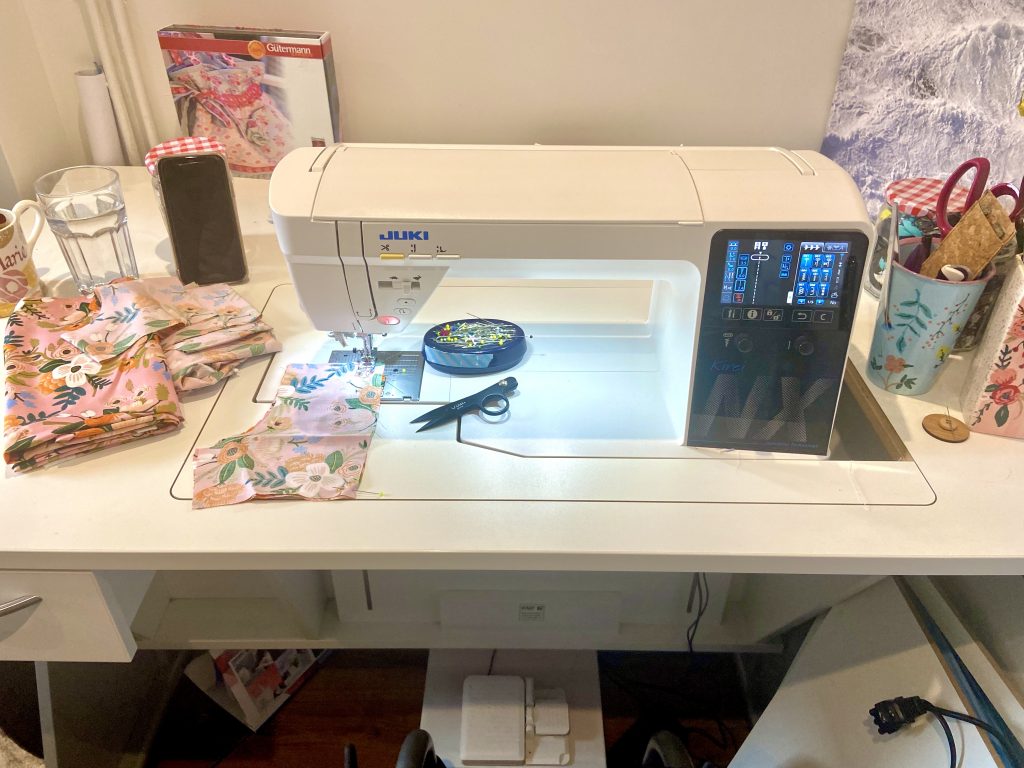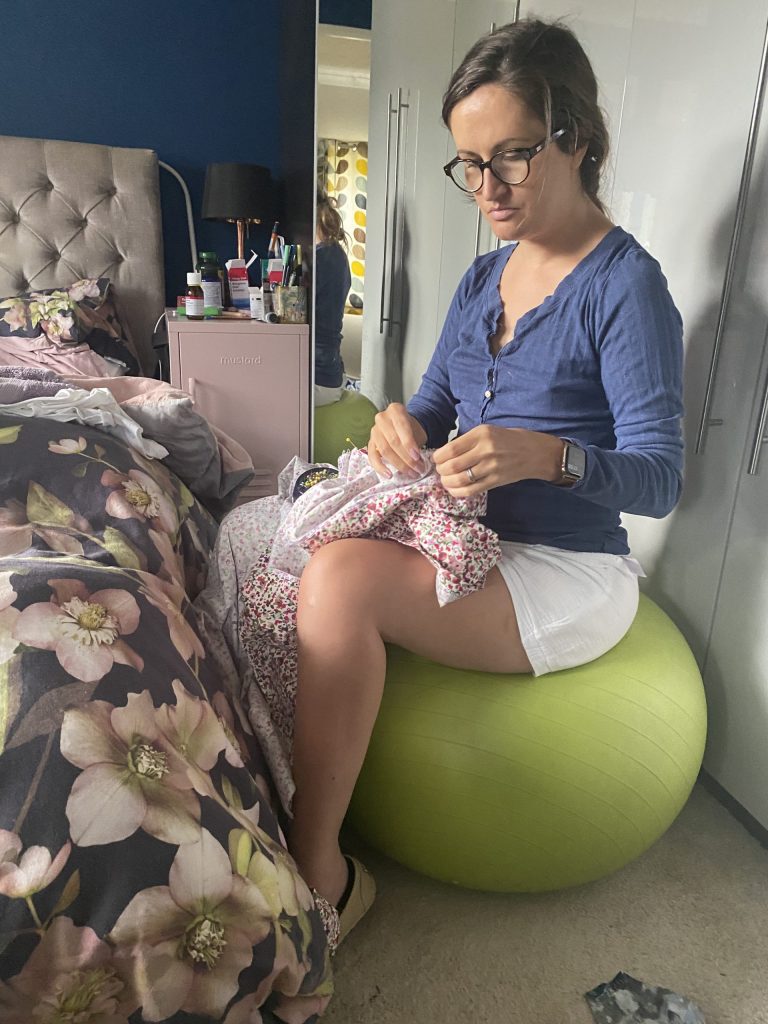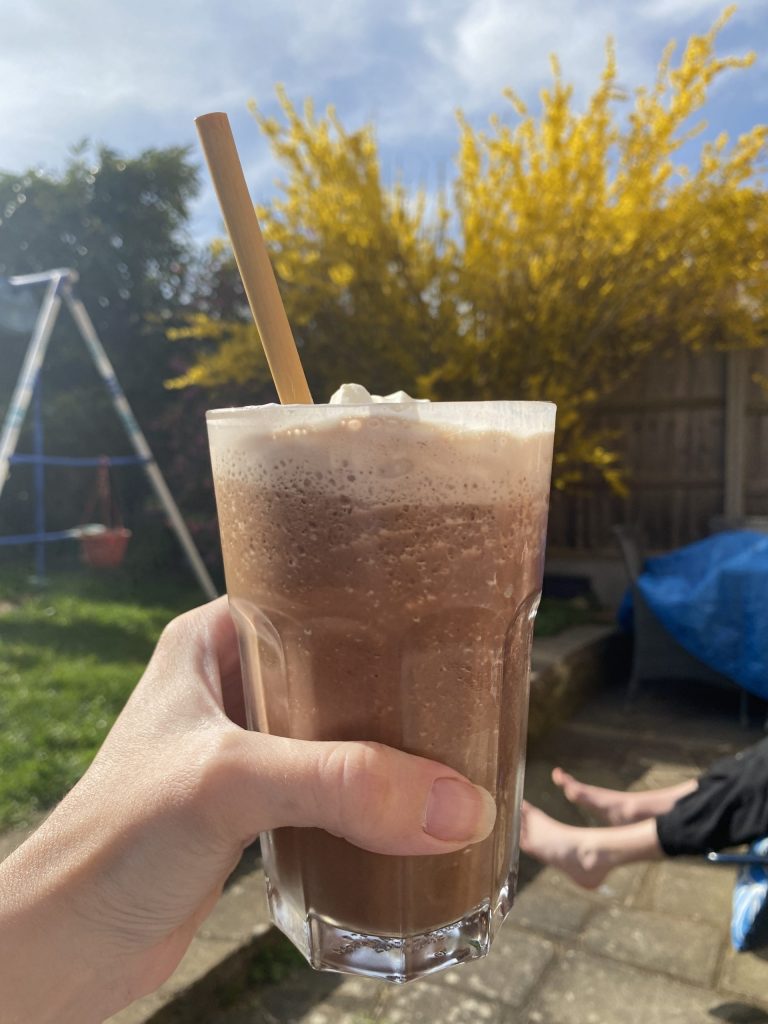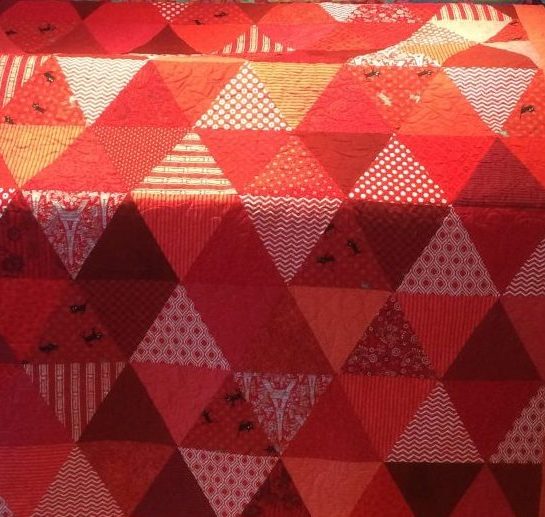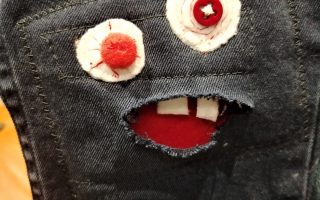Sewing with a disability and chronic pain is no mean feat! Often we have to be creative about reducing the physical impact of sewing on our bodies so that there is no lasting negative impact. Marie shares her insights on how to combine, healthy sewing habits with ergonomic sewing spaces.
What’s wrong with this photo?
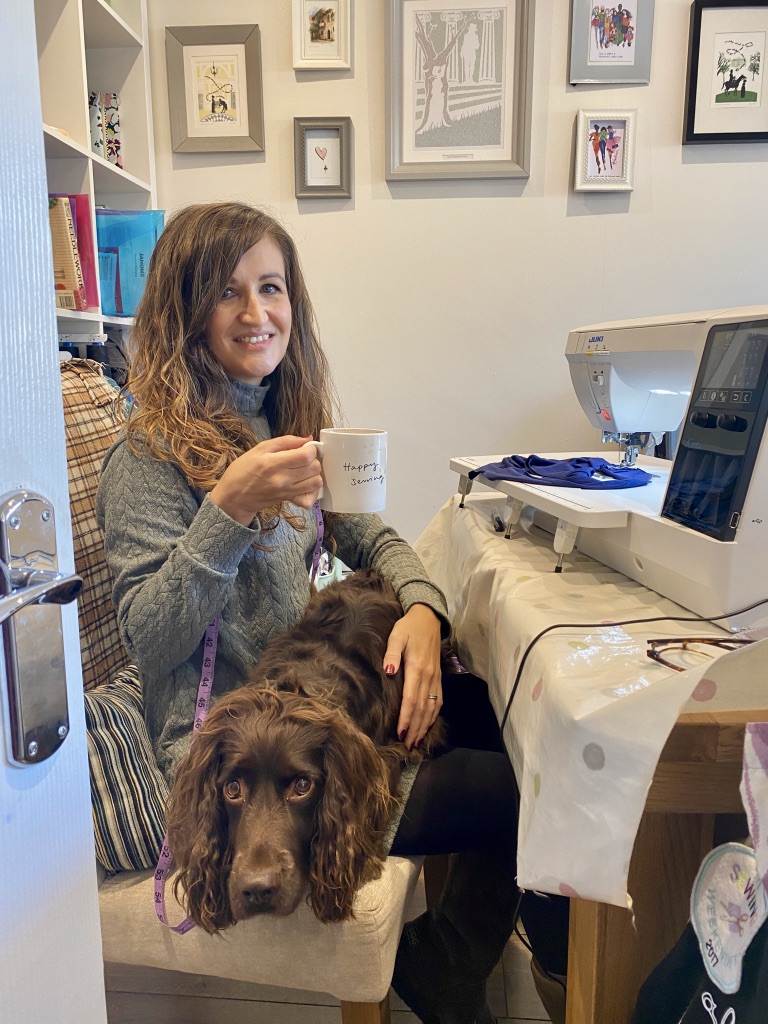
What’s wrong with this photo?
This photo was taken just after I first got this Juki NX7 sewing machine on loan from Franklins. I was thrilled with the machine. But my work surface was much too high. Ideally, the working surface for sewing should be level with your navel. If your work surface is even with your middle, you don’t need to raise your arms or bend your wrists for sewing. This position is a rest position. It takes all the strain off your shoulder and neck muscles and allows you to sew without straining your wrists.
Because my table was too high, I needed to lift my arms to reach my sewing area. Reaching up like this was putting strain on my neck, shoulder and wrist muscles. It meant that I got tired much more quickly.
Franklins Group are the UK Distributor for RMF Sewing Furniture as well as Juki sewing machines. They arranged for me to have a RMF hydraulic table to fit my Juki NX7. My sewing machine can be lowered out of sight to make an adjustable height cutting table. When I’m ready to sew, I can raise the sewing machine and adjust the level of the table so that whether I’m standing or sitting, the level of the sewing machine is ideal for me to sew comfortably.
Finding my working level
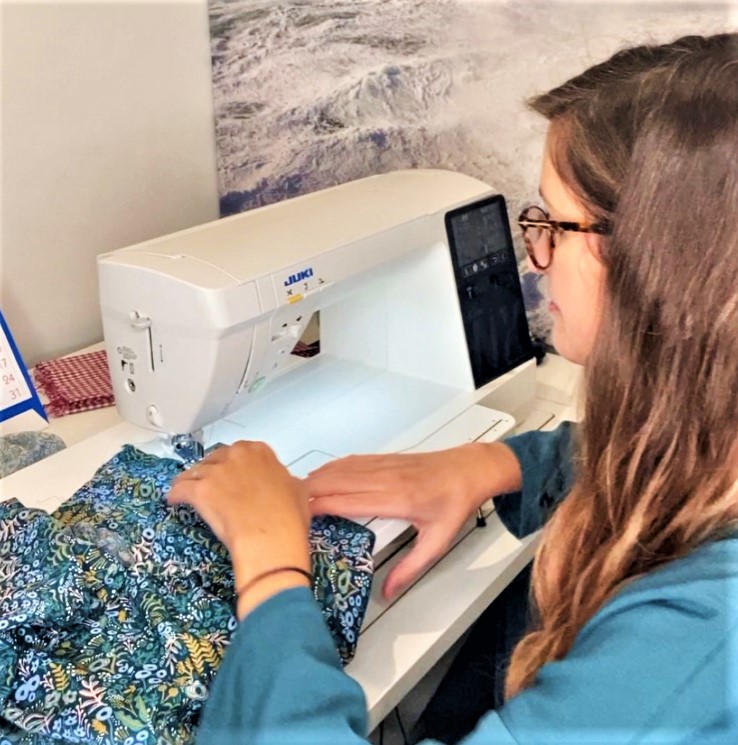
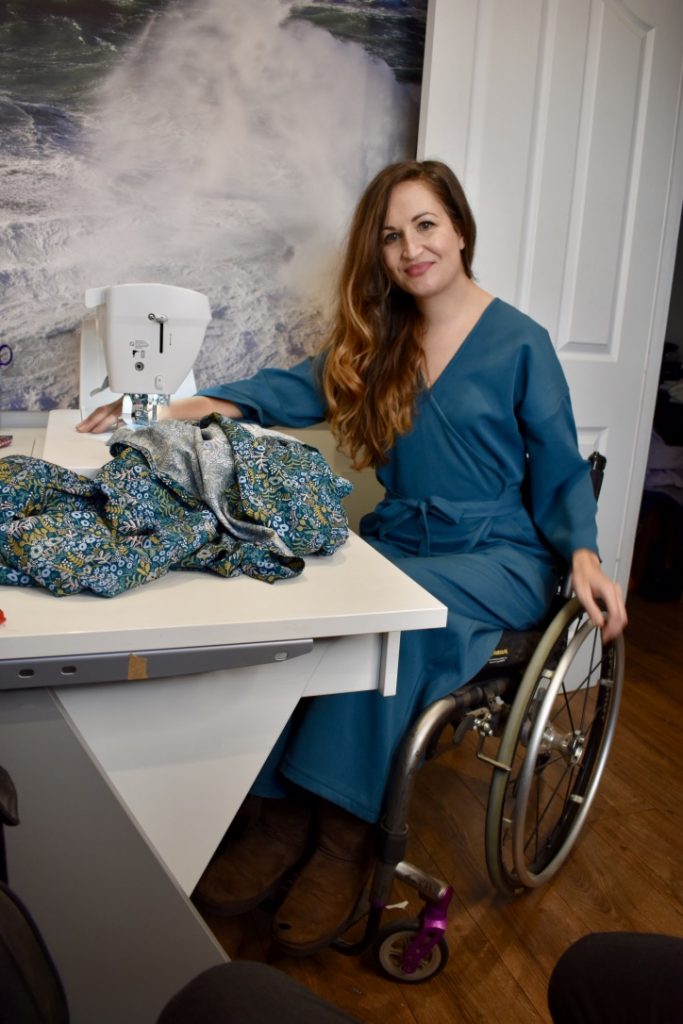
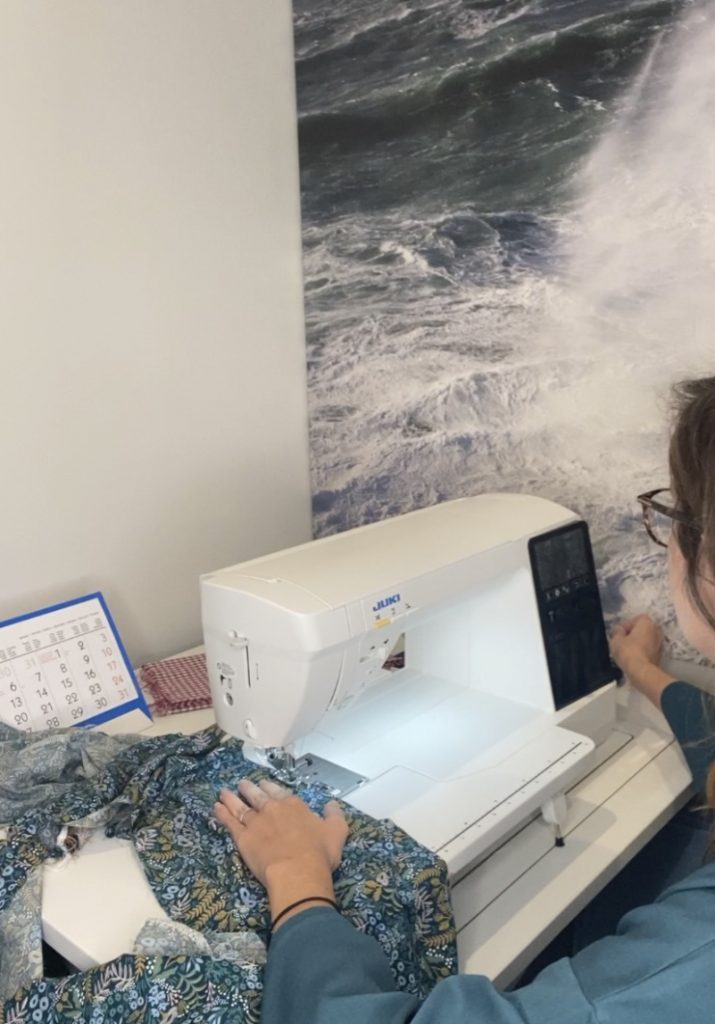
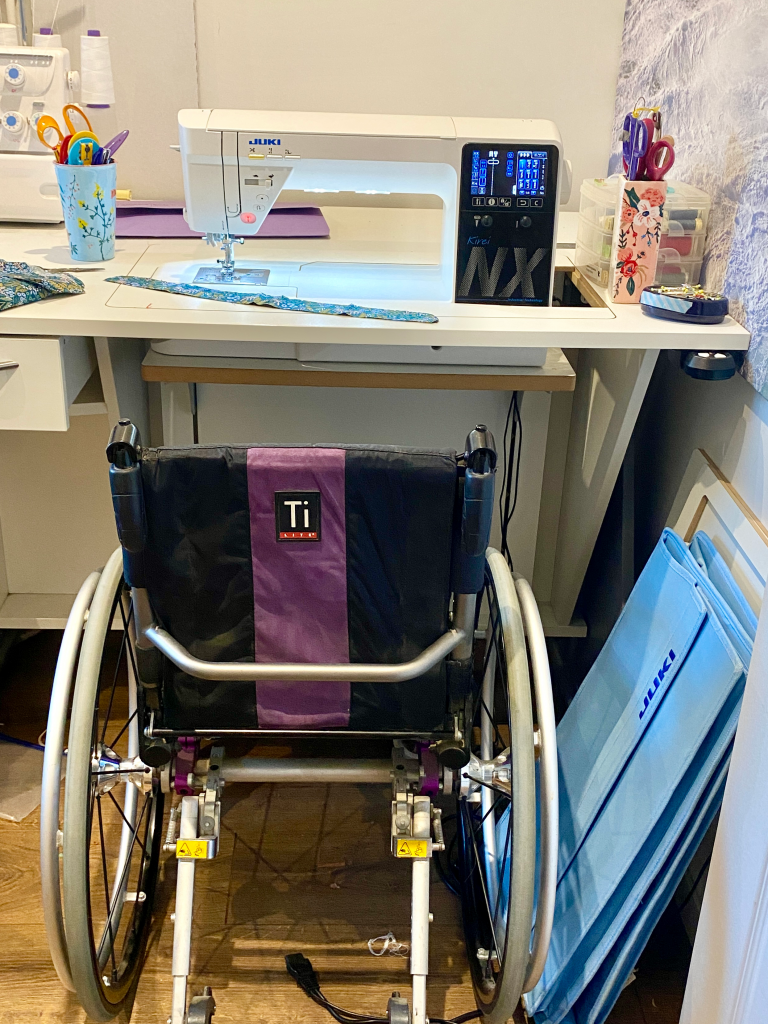
Juki NX7 sunk into the RMF hydraulic table
Notice how the sewing machine is sunk into the table. The base of the machine is lowered so that the bed of the machine is flush with the table. This lowers the machine height and gives me an extended smooth area to sew. The hydraulic table allows me to adjust the level of the entire table at the touch of a button. This meant that I could find my ideal working level.
Since I’ve been given the use of the height adjustable RMF sewing table, I have really noticed the difference in how long I can sew before I need to rest. It has afforded me more time doing what I enjoy with fewer negative consequences.
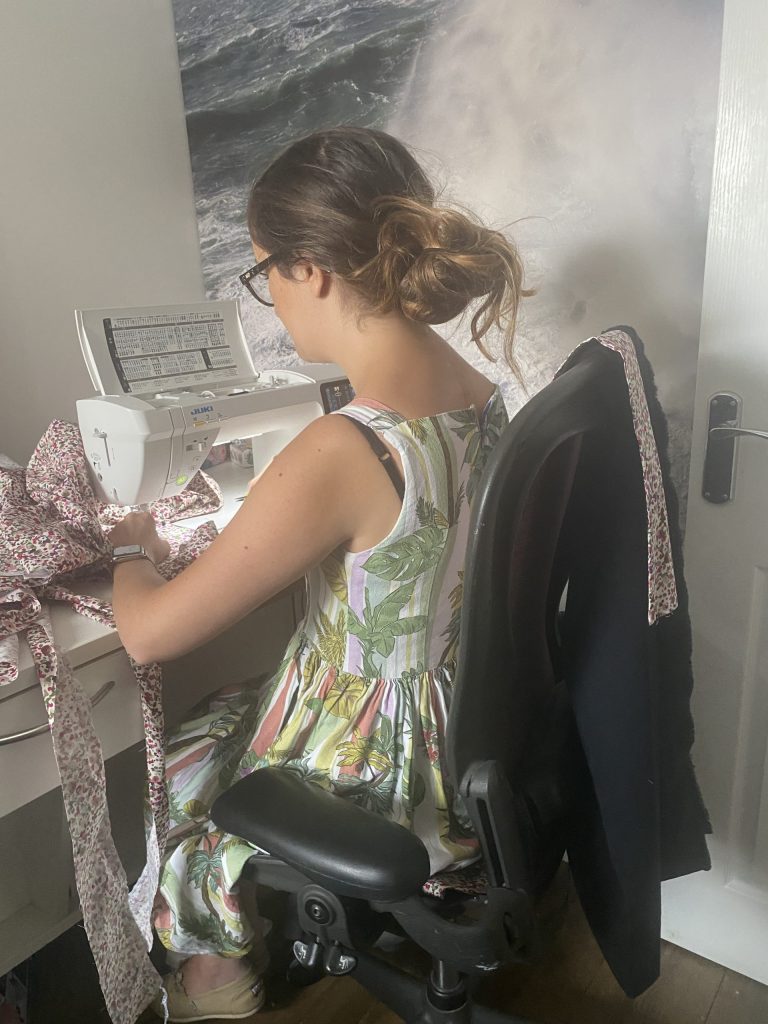
Sitting at the RMF table for sewing
Moving around
One of the main things I have always done to get comfortable is constantly change position. This can look like I am squirming and fidgeting in my chair, adjusting cushions, and stretching. Being able to change the height of my sewing surface at the touch of a button gives me extra ways to
easily adapt my posture.
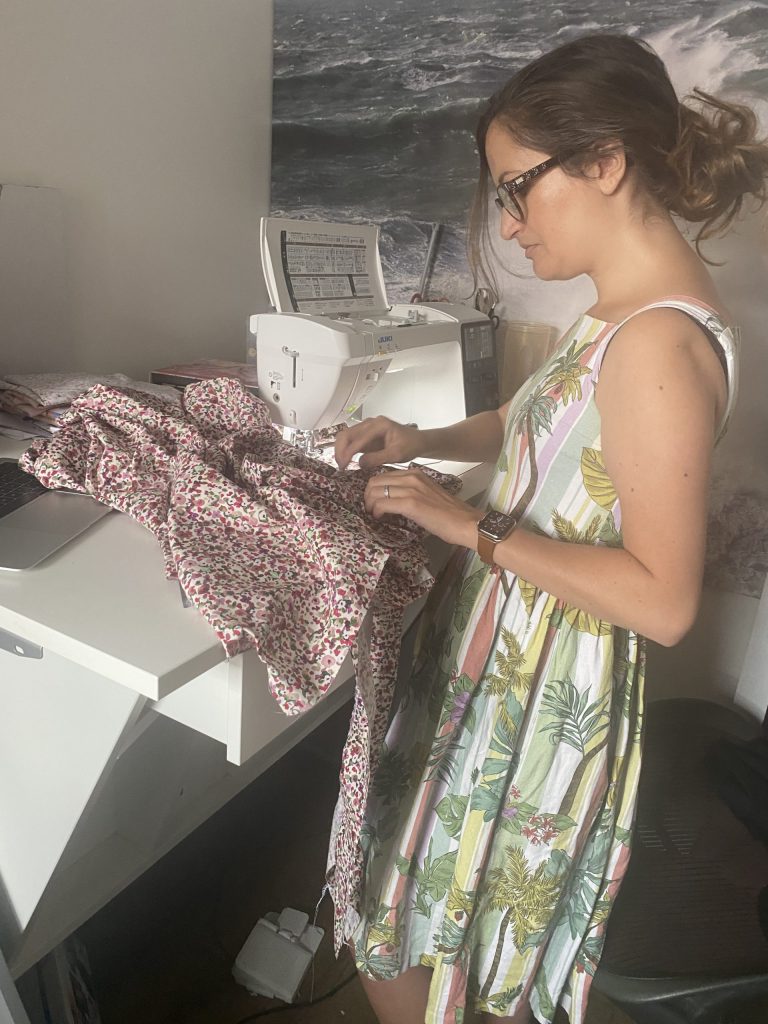
Standing at the RMF table for sewing.
This feature has meant that I now raise and lower the table quite often, according to my posture and comfort at the time. This has vastly reduced my neck pain as I can bring the project up to reduce the need to look down. It also allows me to stand and do some tasks like pinning and preparation work, which gives me the option to have a well needed stretch.
Sitting comfortably
When I use my wheelchair at the sewing machine, it is important to get the foot pedal position correct as I have a fixed footplate on my wheelchair. This has been easily remedied with a box to raise the height of the pedal to meet the wheelchair footplate. Underneath the box is some non
slip rug gripper to stop it sliding away!
Having ergonomic seat cushions is also a very valuable addition to a sewists arsenal. I have a wheelchair cushion which relieves pressure spots, and I also have an Ergonaughts gel enhanced seat cushion for a regular seat.
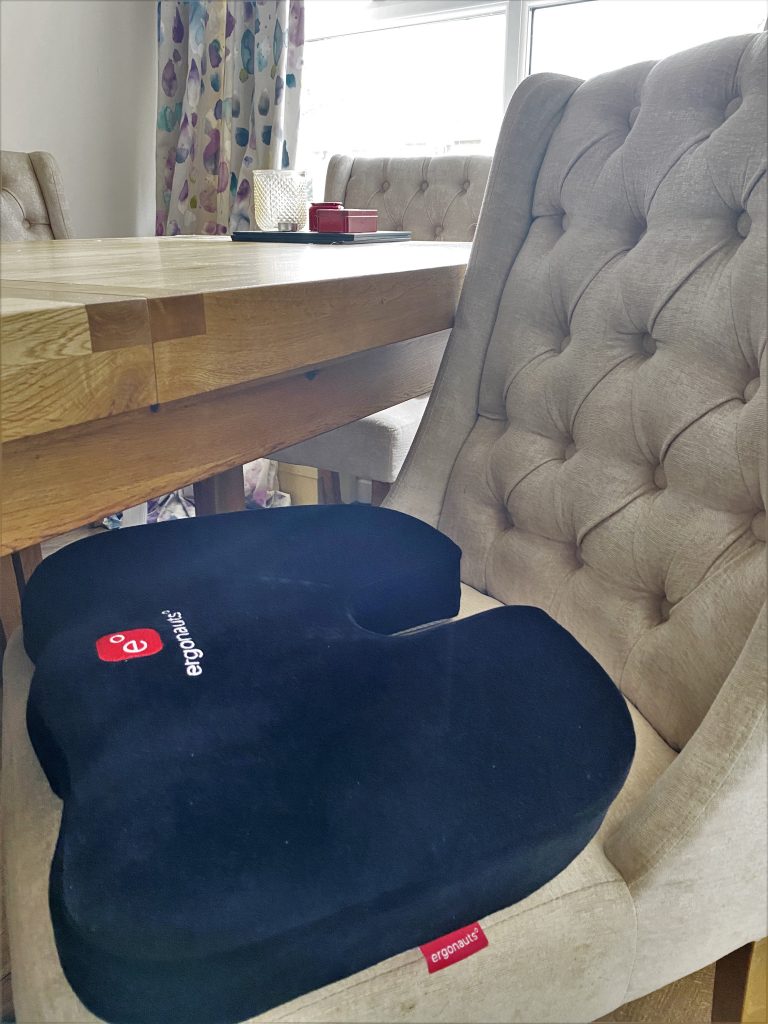
Seat cushions and backrest supports can be a cheaper way of making a chair you already own more comfortable. As they are easily portable, you also have the option to use them
in other environments.
On the Ball
Another way I change position is to use the Pilates ball. Again, if I am pinning or hand sewing, this is a really nice way to change my posture and do some bonus physio! I must try this at the sewing machine: once my core is strong enough.
Getting the lighting right
If I need to be in bed, semi reclined, I usually try and complete any hand sewing finishes. I found having a daylight craft lamp really useful for my hand sewing. I was surprised at how much good lighting reduced the tension in my neck as I stopped straining to see my project.
Simple things
What can you do easily, and without any special equipment? Stretch. Breathe. Drink some water! Unless I set a timer to remind me to do these things, I genuinely forget. Before I know it, I hold an extreme amount of tension in my body. This is not good for anyone, and certainly not for those who experience chronic pain.
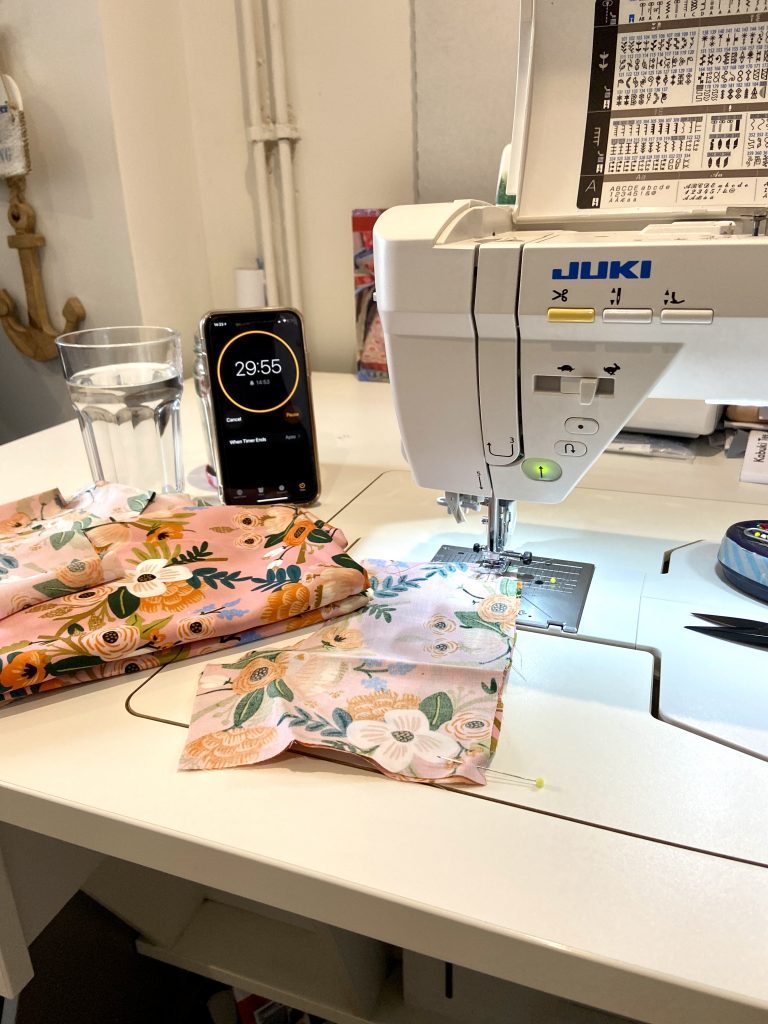
Stretch. Breathe. Hydrate.
Simply looking out of the window to change your field of vision to a longer distance, and taking a sip of water, or relaxing your shoulders, while taking some deep breaths is surprisingly effective. These basic things can refresh and relax anyone anywhere, with or without the perfectly ergonomic sewing room.
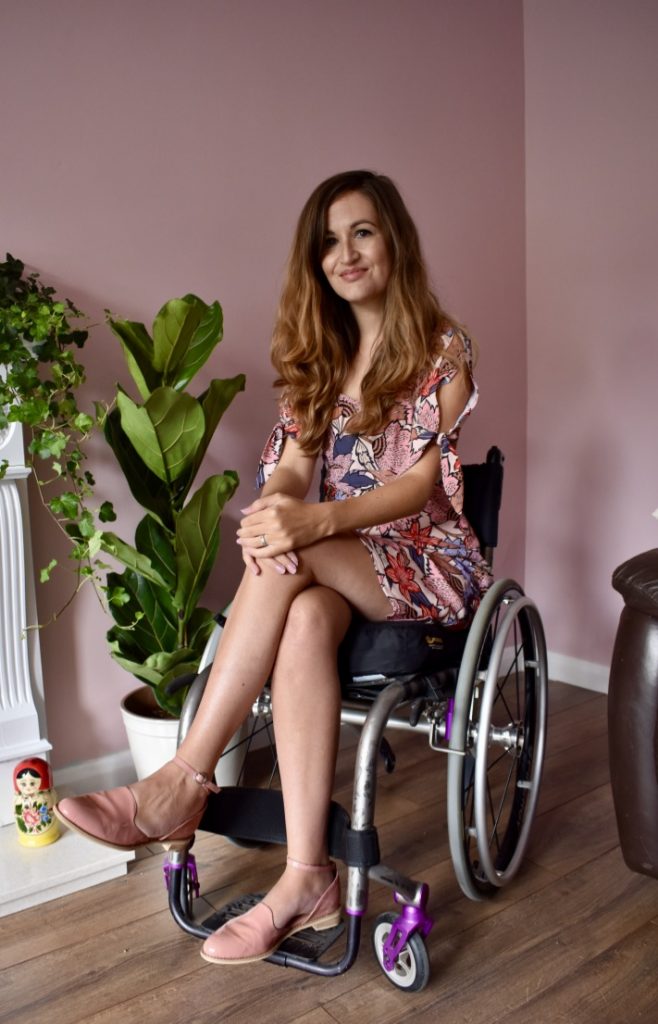
We are so happy to have Marie on our Juki Club team! Marie lives in Bedfordshire with her husband and two children. Woody, the Cocker Spaniel never leaves her side and often makes a cameo appearance in her photos! She is predominantly a garment sewer, and tries to make sustainable choices where possible by creating clothes that will last, as well as re purposing unused items. Having a disability often requires her to work differently in order to make the most of her sewing time. She loves to share her ideas on Instagram @marie_stitchedup and blogging at marie-stitchedup.com.
